Copyright © 2025 Motivate Media Group. All rights reserved.
Zaha Hadid Architects’ dune-shaped Beeah Headquarters in Sharjah marries design and technology
The building aims to create a blueprint for future smart buildings in the region and beyond
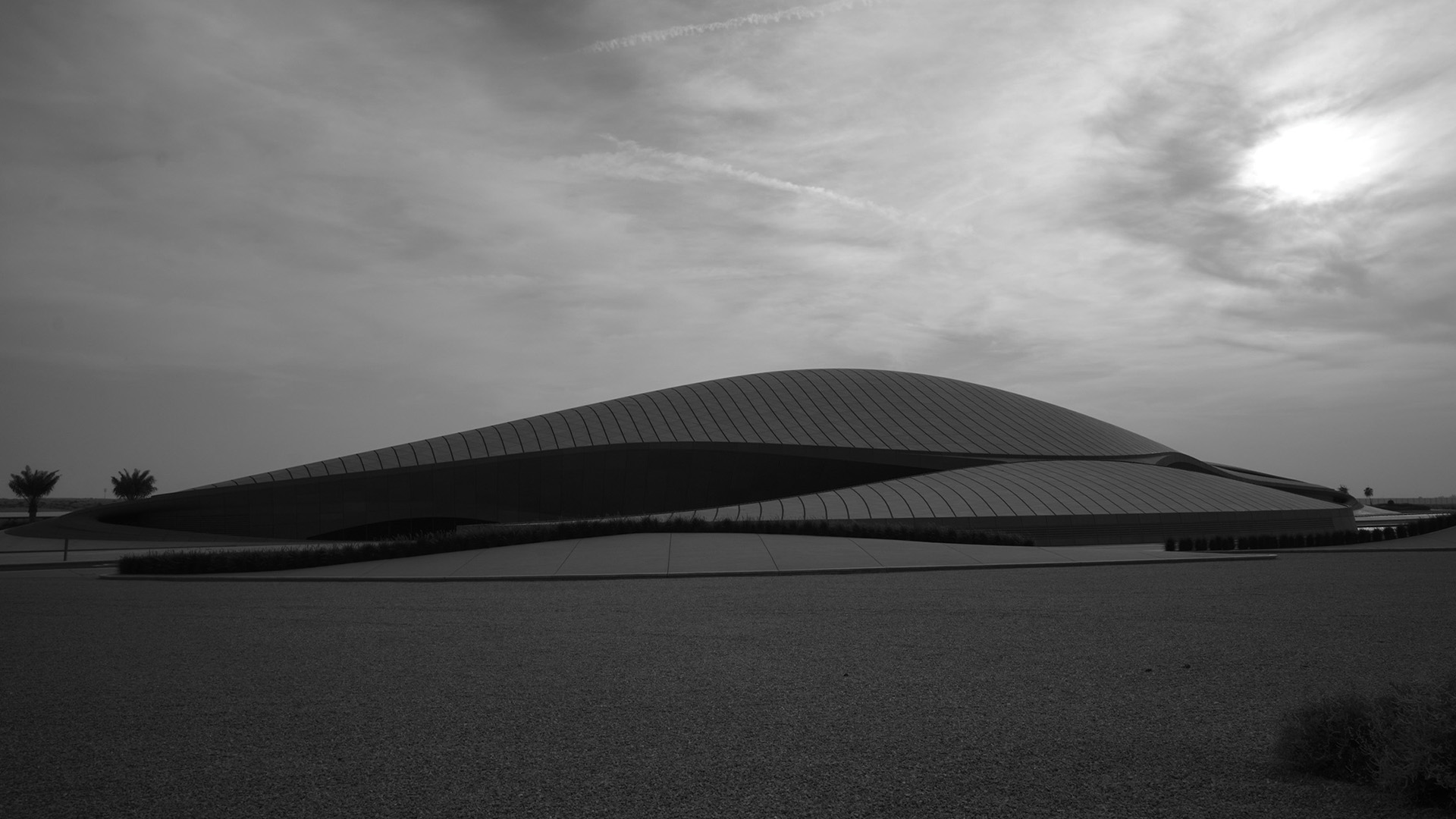
When nearing the site of the newly opened Beeah Headquarters in Sharjah, one becomes instantly overwhelmed by a peculiar form protruding from the Al Sajaa desert, at once strongly futuristic yet soft in its curvaceous forms, like a dormant mammal of sorts. In fact, the building has been designed to mimic its natural surroundings, embodying a series of interconnected ‘dunes’ that are orientated and shaped by the Shamal winds to optimise local climatic conditions.

“[Our] architecture is rooted in the notion of seamless connectivity and often evolves from a building’s context and programme to assimilate with the natural patterns and networks of its surroundings,” says Sara Sheikh Akbari, project director at Zaha Hadid Architects.
Designed by the late Zaha Hadid and commissioned by the emirate’s leading waste management company, Beeah – whose two main pillars include sustainability and digitisation – the building takes on the challenge in responding to both these themes through a series of design-led and technological interventions.
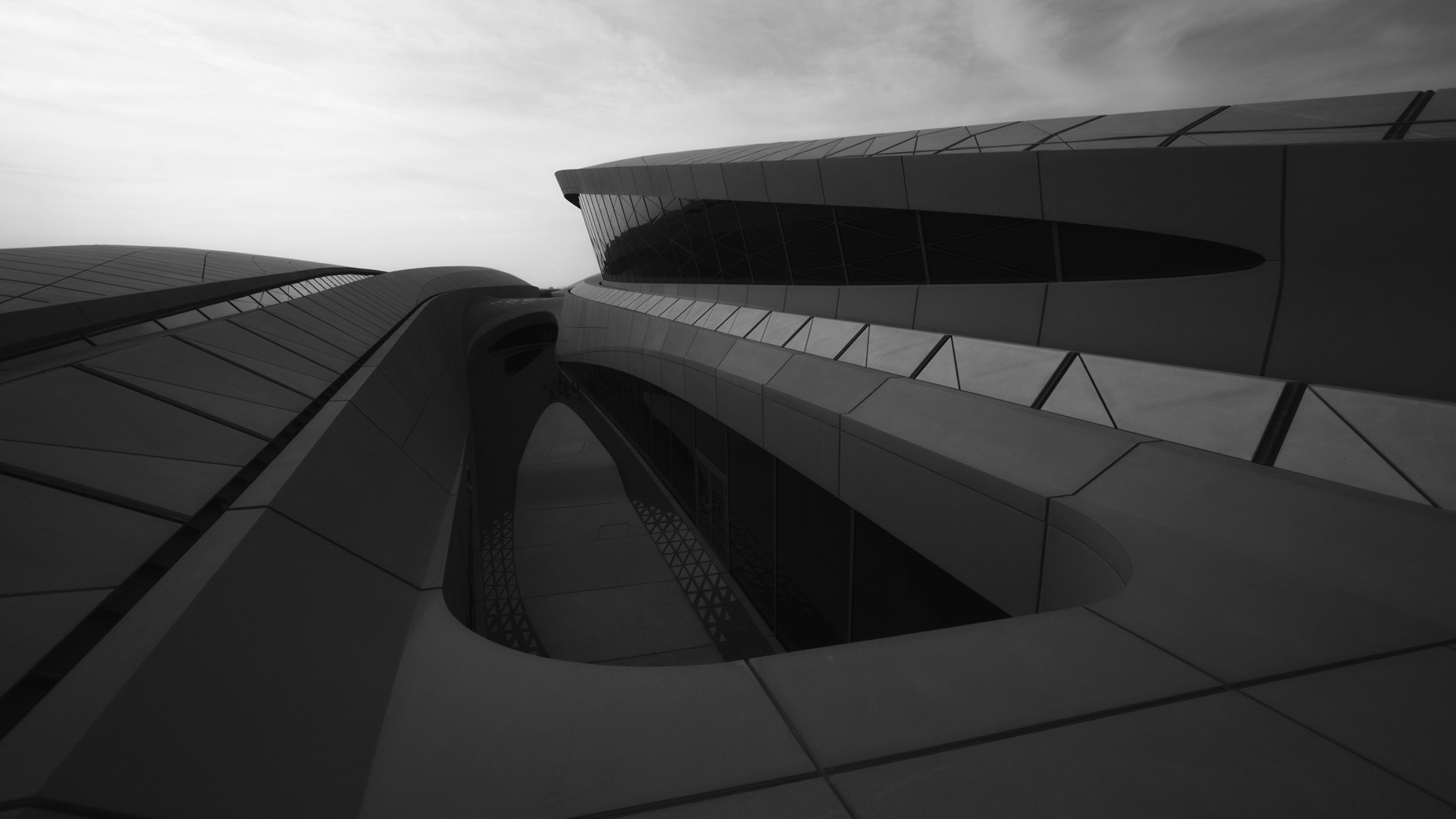
At 9000 square metres, the building serves as the management and administrative centre for Beeah Group and is powered by a solar array linked to Tesla battery packs which, according to the studio, meets the building’s energy demand throughout the day and night, operating at LEED Platinum standards and at net-zero energy.
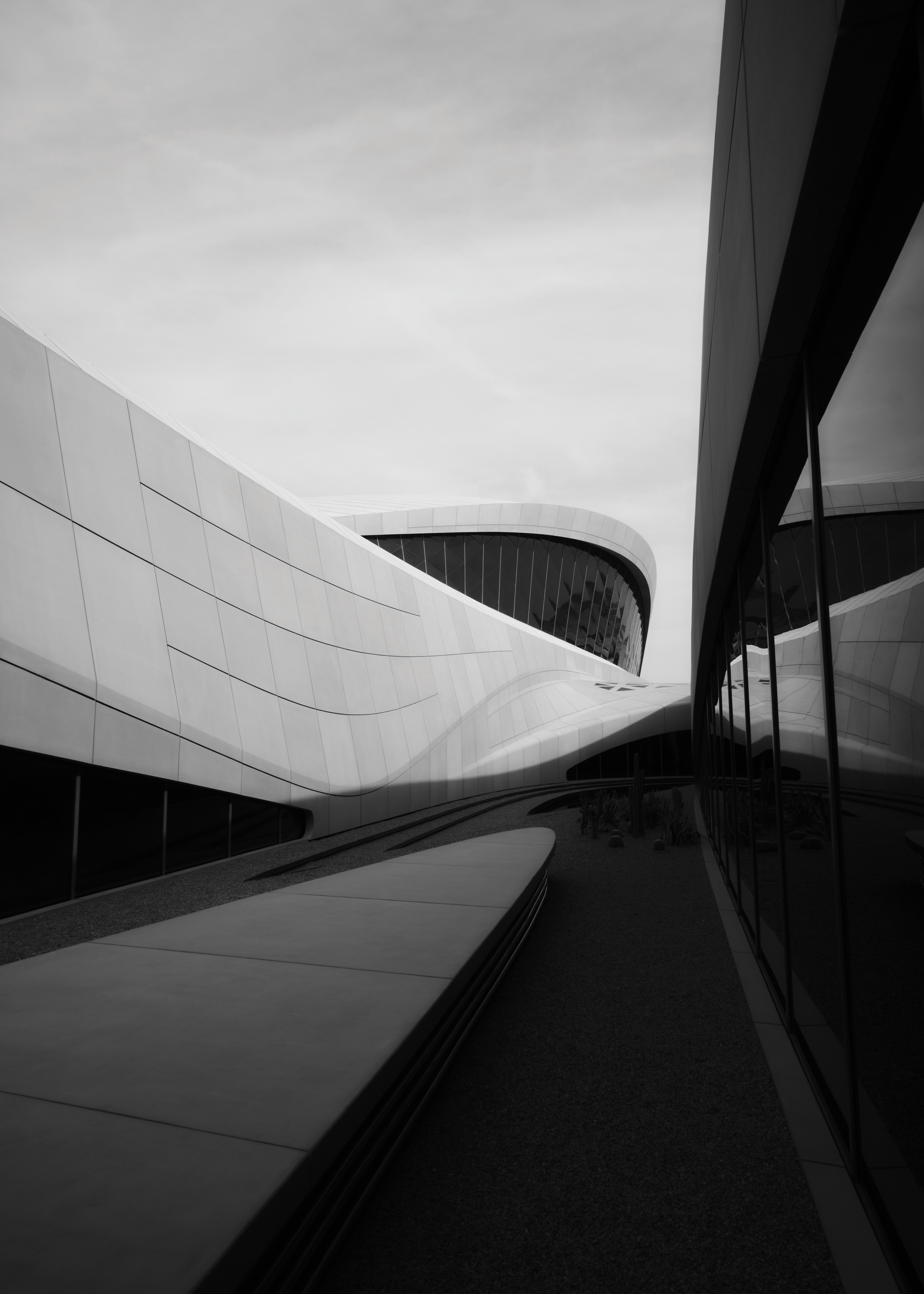
“The building’s photovoltaic system generates power to meet the building’s peak summer demand, thus producing excess electricity during off-peak months which is then fed back to the grid. The Tesla battery storage packs enable this system to power the building at night,” Akbari explains.
Glazing is minimised to prevent the harsh desert sunlight while also ensuring that the interiors are filled with ample daylight. The locally produced external glass-fibre-reinforced concrete cladding increases the building’s thermal mass while regulating internal temperatures and allowing natural ventilation for cooling.
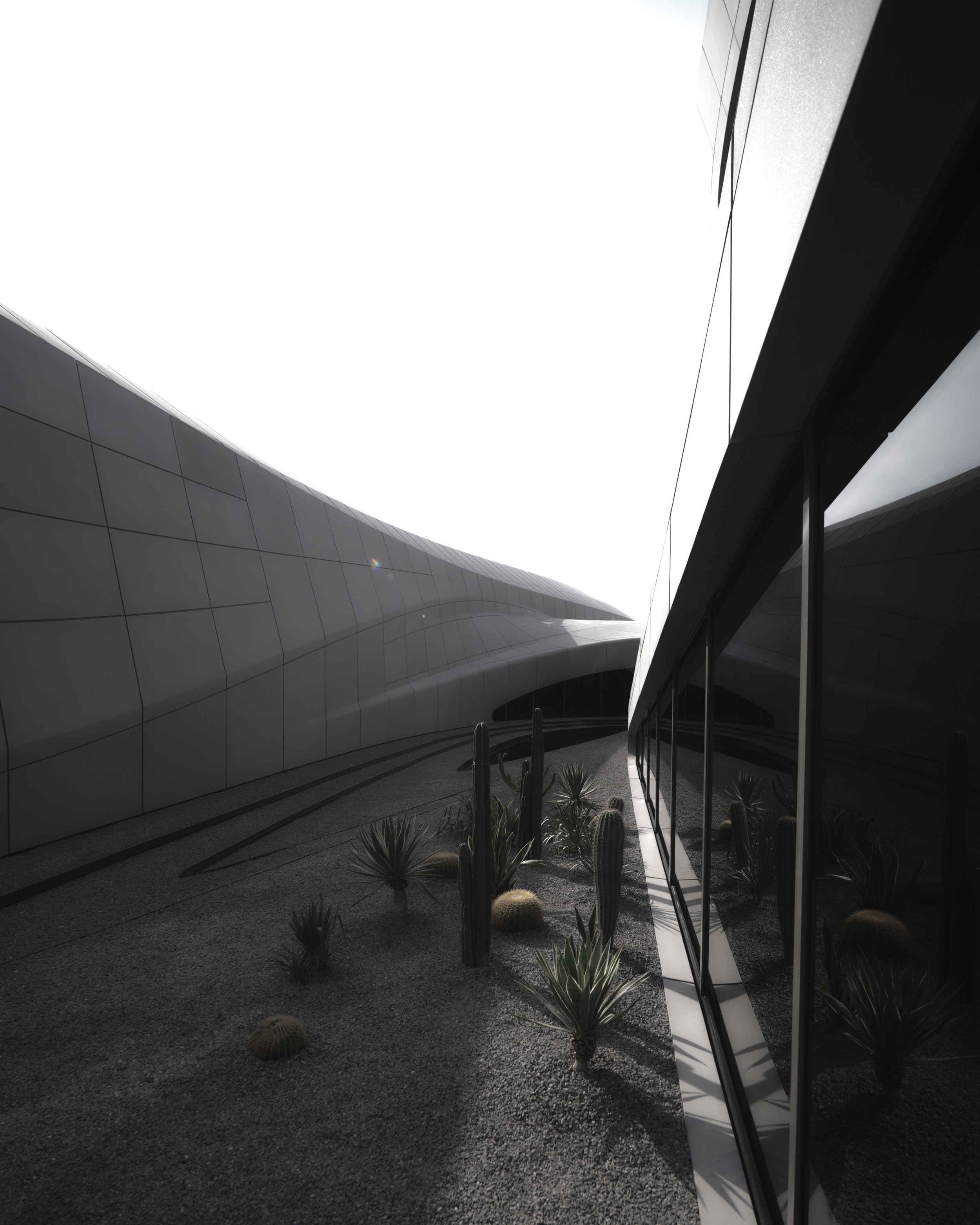
The building also utilises the twin technologies of ‘self-learning’ and ‘self-healing capabilities’ through a smart management system that predicts occupancy and uses the data to automatically adjust light and temperature to optimise the building’s energy use.
Its two primary ‘dunes’ are divided into the public and management departments and the administrative zone, connected by a central courtyard, which is designed to mimic an oasis and helps provide natural ventilation. The building also features open-plan offices, smart meeting rooms and an immersive visitors’ centre and auditorium.
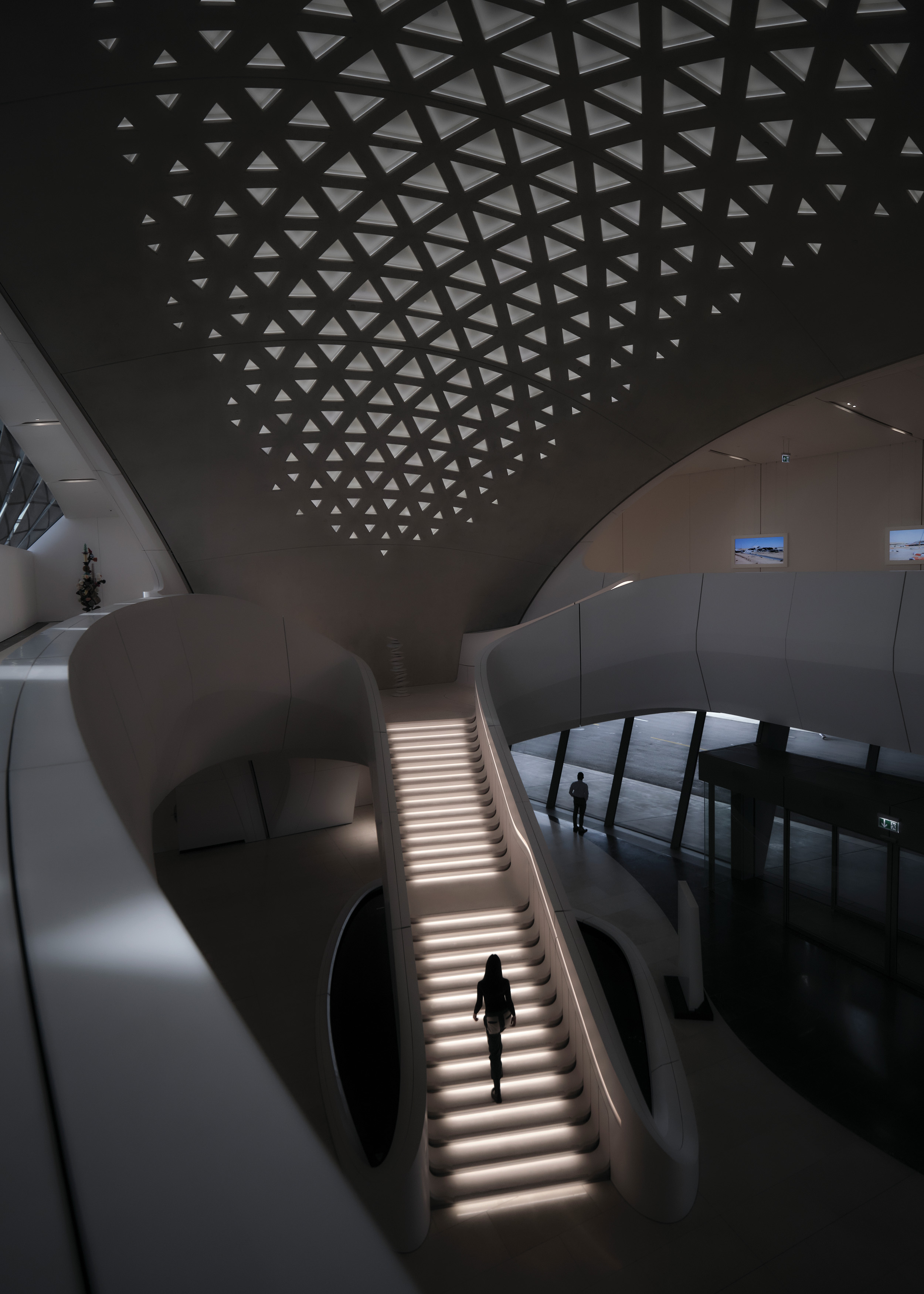
Inside, visitors enter beneath a 15-metre-high fair-faced concrete dome that covers the double-height space of the lobby and contrasts with the rest of the interiors. Being one of the main architectural features of the building, it is also the main support for the steel structure of the roof.
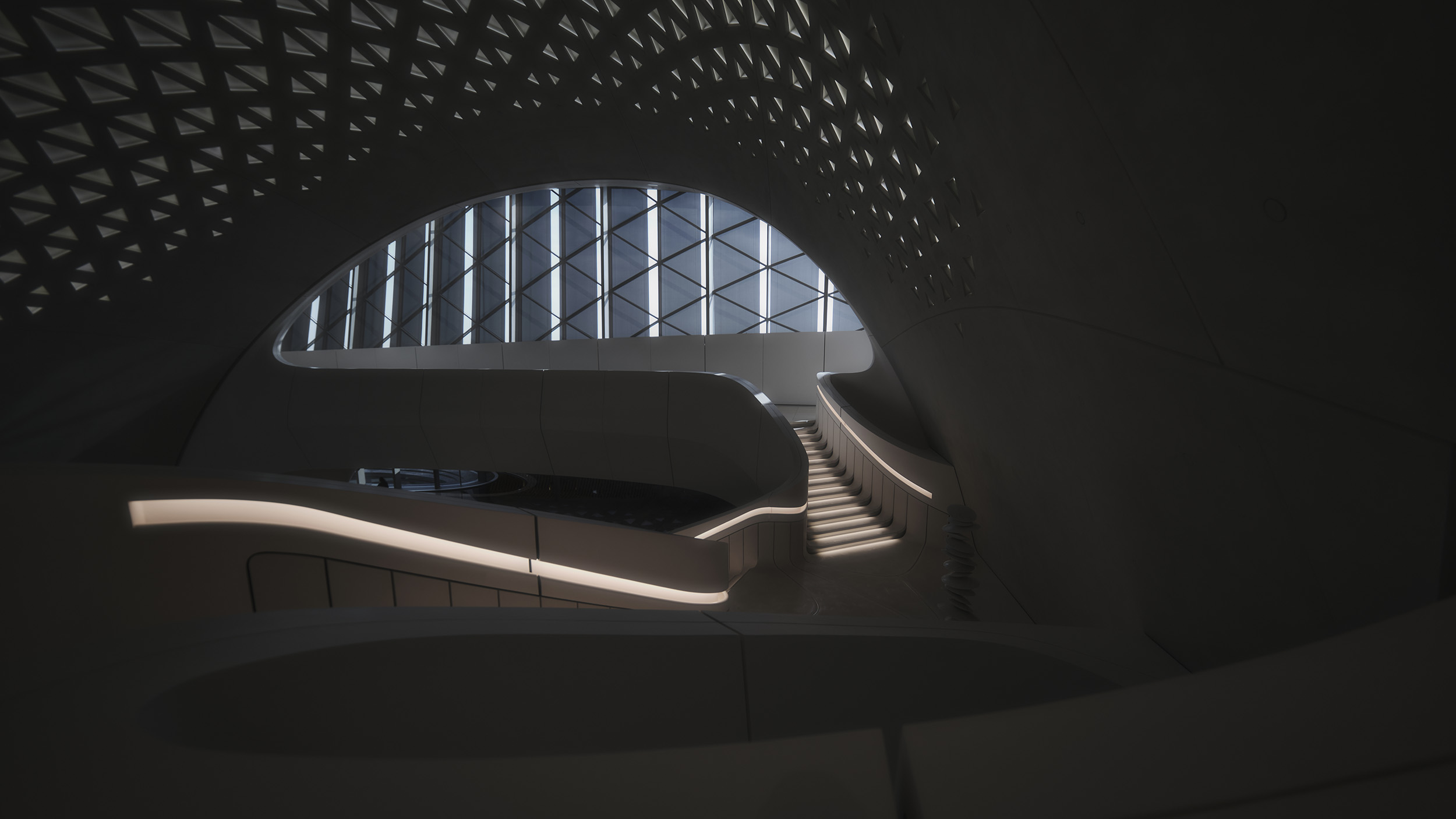
“The feature stair located at the centre of the lobby leads visitors and staff to the gallery area surrounding the concrete dome and the management spaces at level 1. GRC panels introduced at the walkable surfaces of the steps lift up and interface with the GRP handrail, which merges with the GRP walls and ceilings,” Akbari describes.

“While responding to the performance requirements, the lighting design also emphasises geometry, fluidity and directionality. “Beeah Headquarters is a climate-conscious building that constantly modulates itself, becoming smarter and more efficient and drawing on data within its living laboratory,” she continues. “The advancements in its design and construction technologies can hopefully serve as a blueprint for smart, sustainable developments in the future.”
Photography by Amir Hazim
The Latest
Elevate Your Reading Space
Assouline’s new objects and home fragrances collection are an ideal complement to your reading rituals
All Aboard
What it will be like aboard the world’s largest residential yacht, the ULYSSIA?
Inside The Charleston
A tribute to Galle Fort’s complex heritage, The Charleston blends Art Deco elegance with Sri Lankan artistry and Bawa-infused modernism
Design Take: Buddha Bar
We unveil the story behind the iconic design of the much-loved Buddha Bar in Grosvenor House.
A Layered Narrative
An Edwardian home in London becomes a serene gallery of culture, craft and contemporary design
A Brand Symphony
Kader Mithani, CEO of Casamia, and Gian Luca Gessi, CEO of Gessi, reflect on the partnership between the two brands
The Art of Wellness
Kintsugi in Abu Dhabi, situated in a seven-storey villa, offers the ultimate zen retreat
Design Take: Inside the Royal Suite at Jumeirah Al Naseem
With sweeping views of the ocean and Burj Al Arab, this two bedroom royal suite offers a lush stay.
Elevated Living
Designed by La Bottega Interiors, this penthouse at the Delano Dubai echoes soft minimalism
Quiet Luxury
Studio SuCo transforms a villa in Dubailand into a refined home
Contrasting Textures
Located in Al Barari and designed by BONE Studio, this home provides both openness and intimacy through the unique use of materials
Stillness, Form and Function
Yasmin Farahmandy of Y Design Interior has designed a home for a creative from the film industry
















